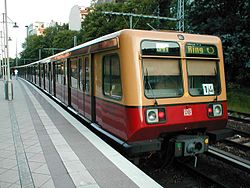| Class | Name | Use | Remarks |
|---|
| 101 | | Long-distance services | |
| 102 | Škoda 109E | Munich-Nuremberg-Express | |
| (103) | | Long-distance services | Retired |
| 105 | Talgo Travca | Long-distance services (Talgo) | |
| (109) | ex DR 211 | | Retired |
| (110) | ex DB E 10 | Previously used for long distances, regional services | Retired |
| 111 | | Regional services, previously also S-Bahn | |
| (112) | ex DB E 10.12 | Long-distance services | Reclassified to DB 113 or 114 respectively |
| 112 | ex DR/DB 112.1 | Regional services | |
| (113) | ex DB 112 | Regional services | Retired, High speed bogies |
| (114) | ex DB 112 | Regional services | Converted to DB 110 |
| 114 | ex DR/DB 112.0
ex DR 212.0 | Regional services | |
114.1
114.3 | ex DB 143
ex DR 243 | Regional services | Conversion to higher velocities in planning |
| (115) | ex DB 110
ex DB 113 | DB-Autozug (motorrail train) | Retired, Reclassified for auditorial reasons |
| (120) | | Long-distance services | First three-phase electric power locomotive. Retired. |
| (127) | Siemens EuroSprinter | Prototype | No longer in stock |
| (128) | AEG 12X | Prototype | No longer in stock |
| (139) | ex DB E 40.11 | Regional and goods services | Retired, DB 140 with electric brakes, partially converted DB 110 |
| (140) | ex DB E 40 | Goods services | Retired |
| (141) | ex DB E 41 | Regional services | Retired |
| (142) | ex DR 242 | Regional- and goods services | Retired |
| 143 | ex DR 243 | S-Bahn, Regional services | |
| 145 | Bombardier TRAXX | Goods services | |
| 146.0 | Bombardier TRAXX | Regional services | |
| 146.1 | Bombardier TRAXX
(P160 AC) | Regional services | |
| 146.2 | Bombardier TRAXX 2
(P160 AC2) | Regional services | |
| 146.5 | Bombardier TRAXX 2
(P160 AC2) | Long-distance services | |
| 147 | Bombardier TRAXX 3
(P160 AC3) | Long-distance and regional services | |
| (150) | ex DB E 50 | Goods services | Retired |
| (151) | | Goods services | |
| 152 | Siemens EuroSprinter
(ES 64 F) | Goods services | |
| (155) | ex DR 250 | Goods services | Retired |
| (156) | ex DR 252 | Goods services | Sold to MEG |
| (171) | ex DR 251 | Rübeland Railway | Retired, Mothballed, 25 kV 50 Hz ~ only |
| (180) | ex DR 230 | Cross-border services (CZ, PL) | 15 kV 16.7 Hz ~ and 3 kV = |
| (181) | ex DB E 310 | Cross-border services (F, LUX) | Retired, 15 kV 16.7 Hz ~ and 25 kV 50 Hz ~ |
| 182 | Siemens EuroSprinter
(ES 64 U2 „Taurus“) | Regional services, Systemtechnik, Netz | 15 kV 16.7 Hz ~ and 25 kV 50 Hz ~ |
| (184) | ex DB E 410 | Cross-border services (F, LUX, B, NL) | Retired, 15 kV 16.7 Hz ~, 25 kV 50 Hz ~, 1,5 kV = and 3 kV = |
| 185.0 | Bombardier TRAXX
(F 140 AC) | International goods services | 15 kV 16.7 Hz ~ and 25 kV 50 Hz ~ |
| 185.2 | Bombardier TRAXX 2
(F 140 AC2) | International goods services | 15 kV 16.7 Hz ~ and 25 kV 50 Hz ~ |
| 187 | Bombardier TRAXX 3
(F 140 AC3) | Goods services | |
| 189 | Siemens EuroSprinter
(ES 64 F4) | International goods services | 15 kV 16.7 Hz ~, 25 kV 50 Hz ~, 1,5 kV = and 3 kV = |
| 193 | Siemens Vectron | International goods services, Systemtechnik, Regional service | partially rented from Dispolok, ELL Austria, 15 kV 16.7 Hz ~, 25 kV 50 Hz ~, 1,5 kV = and 3 kV = |



































